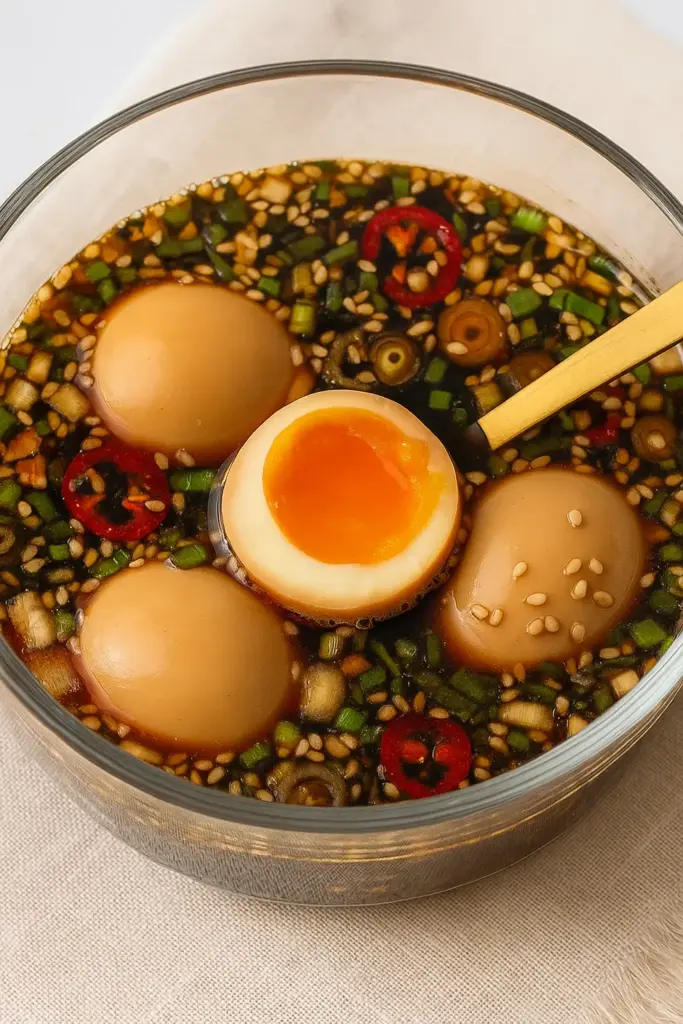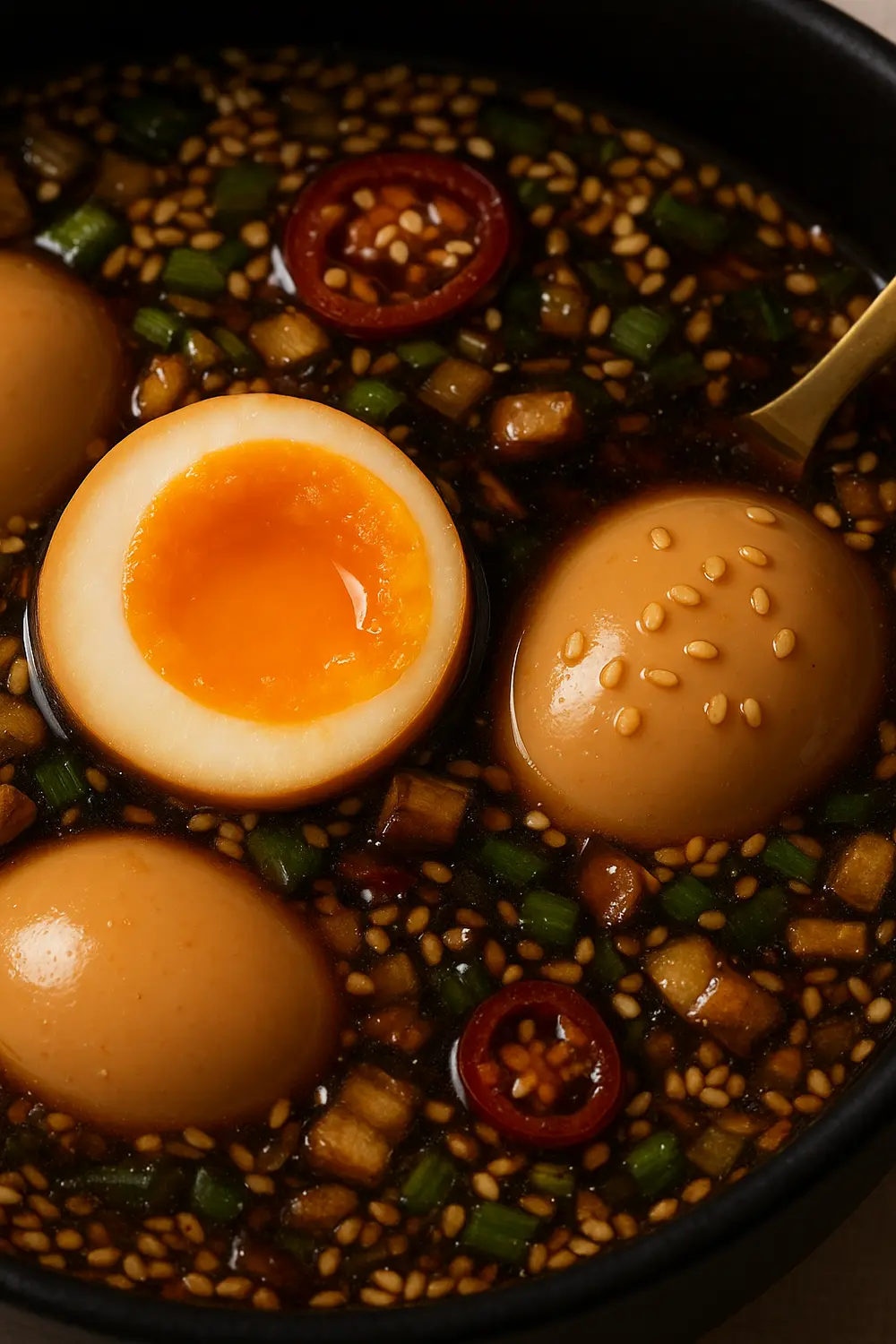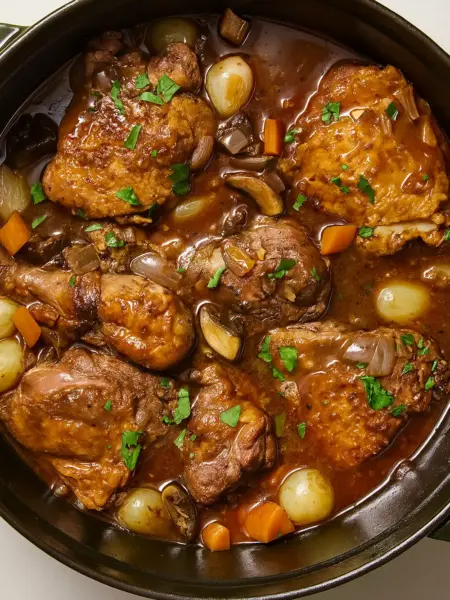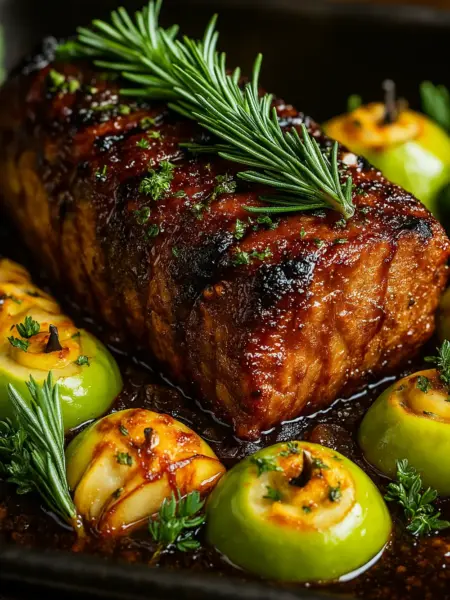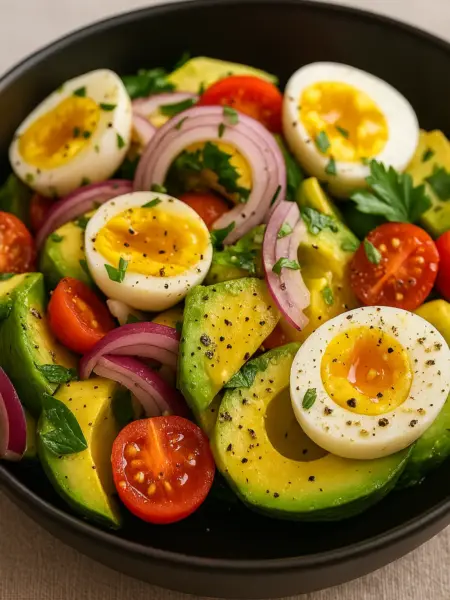This post may contain affiliate links, meaning I may earn a commission if you make a purchase, at no extra cost to you. I only recommend products I trust. Thank you for your support.
This easy Korean mayak eggs recipe features irresistible soft-boiled eggs soaked in a flavor-packed soy sauce marinade infused with fresh garlic, chili, sesame, and scallions.
Korean eggs are beloved in many Asian households, often served as a side with rice or noodles for a complete meal, or even tucked into a lunchbox (dosirak).
Known as mayak gyeran, these eggs get their name from the word “mayak,” which literally means “narcotic” or “drug” in Korean, referring to how irresistibly addictive these flavorful eggs are.
Rest assured, no illegal substances are involved; the name simply reflects the eggs’ irresistibly delicious flavor that keeps you coming back for more, and once you’ve tried them, you’ll understand why.
In this mayak eggs recipe, soft-boiled eggs are marinated in a flavorful mix of soy sauce, mirin, fresh aromatics, sesame seeds with kelp stock for that deep umami flavor.
These Korean marinated eggs are quick to make, requiring just seven minutes of active cooking time, and they keep well in the fridge for several days, making them perfect for meal prep.
✅ Take a moment to read through the whole post for the ingredient list, expert tips, and equipment suggestions. The full recipe is right below!
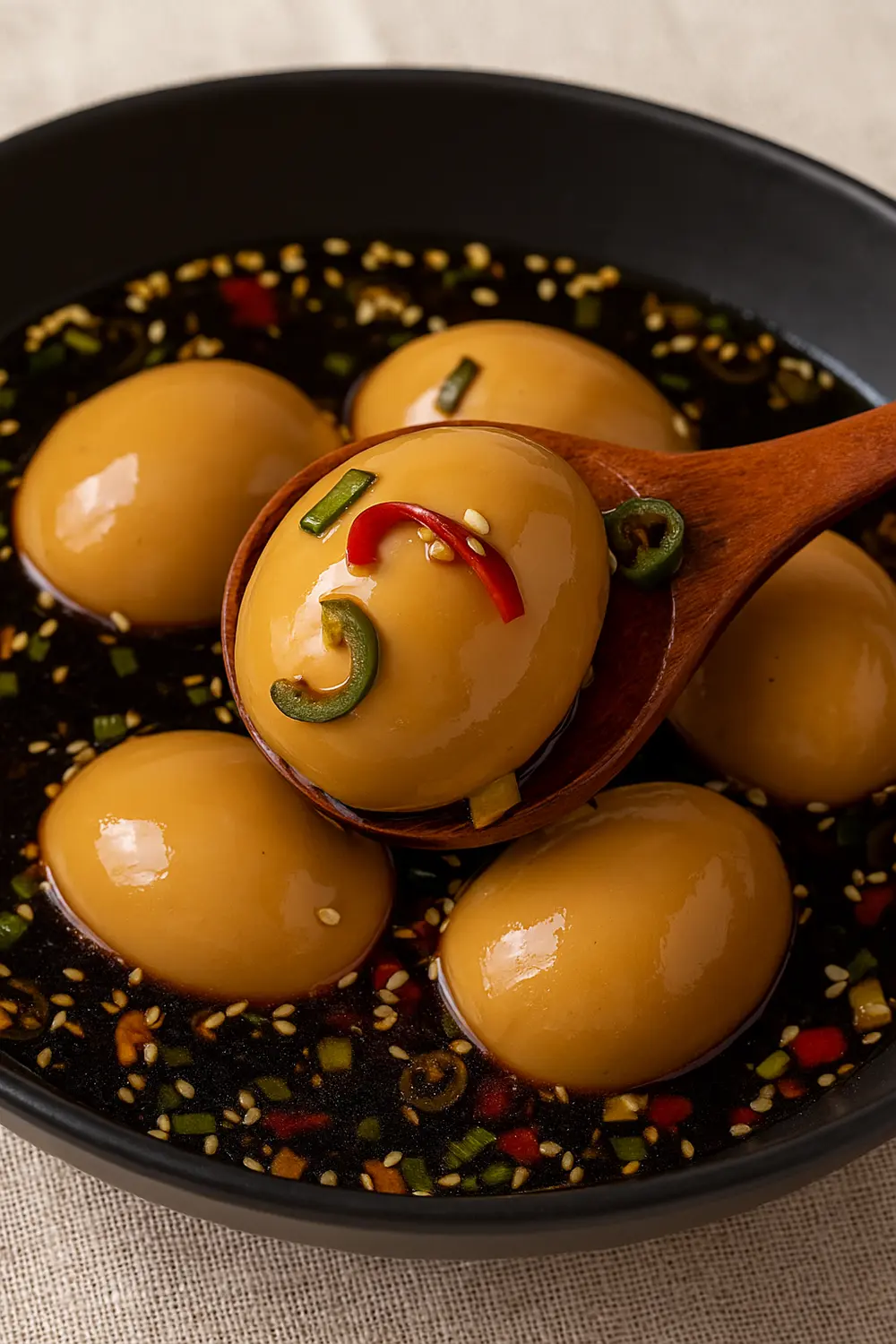
Key Ingredients for This Korean Marinated Eggs Recipe
The magic of Korean soy marinated eggs is derived from a short list of simple ingredients, where the quality and preparation of each component are critical to achieving the final, addictive flavor.
1. Large Eggs
- Use large, fresh eggs with bright orange yolks if you can find them.
- Make sure the eggs are at room temperature before boiling to prevent the shells from cracking and to ensure the yolks cook evenly.
2. Soy Sauce
- Soy sauce provides the deep, savory, salty bedrock of the marinade.
- For dietary needs, tamari or coconut aminos can be used to create a fantastic gluten-free alternative.
3. Sweetener
- Sweeteners like rice syrup, corn syrup, honey, or granulated sugar are crucial.
- These sweeteners cut through the intense saltiness of the soy sauce, creating the signature sweet-and-savory balance that makes these eggs so compellingly addictive.
4. Fresh Aromatics
- These include finely minced raw garlic, diced white or yellow onion, and sliced green onions (scallions).
- Use raw aromatics as their sharp, pungent flavor provides necessary contrast to the deep, sweet richness of the marinade, keeping the taste profile bright and complex.
5. Chili Peppers
- A combination of red and green chili peppers (such as serrano or jalapeño) are finely chopped and added raw.
- They infuse a clean, subtle heat into the marinade, which provides a fresh kick without overpowering the savory base.
6. Mirin
- Mirin (sweet red wine) adds a layer of subtle alcoholic sweetness and depth, which contributes to the overall complexity of the marinade and gives the finished eggs a desirable glossy sheen.
7. Toasted Sesame Seeds
- Toasted sesame seeds are added directly to the marinade for a pleasant, nutty texture and an authentic Korean aroma.
- They contribute to the visual appeal and the final layer of subtle flavor.
8. Kelp Stock
- Rehydrated kelp stock adds a subtle oceanic depth and natural umami that enhances the savory-sweet balance of the marinade.
- If you don’t have kelp stock on hand, plain water works just fine.
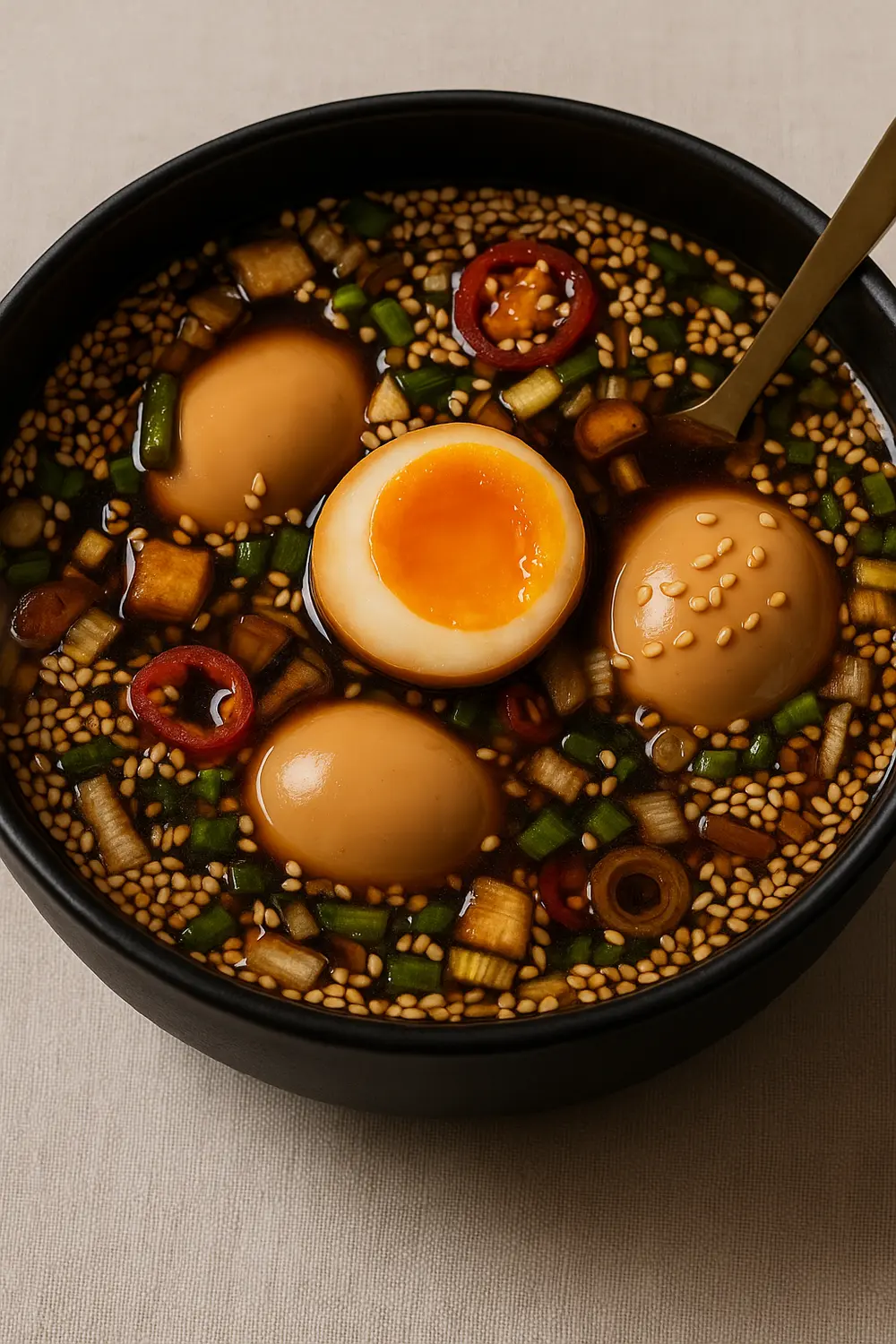
Essential Tools You’ll Need for This Mayak Eggs Recipe
Achieving the precision required for the perfect jammy egg necessitates using basic kitchen tools with intention.
- Medium Pot: Needed to bring the water to a rapid, rolling boil. Ensure it’s large enough for all the eggs to be submerged.
- Digital Timer: The difference between a jammy yolk and an overcooked yolk is less than a minute, making a precise digital timer (set to exactly 6 minutes and 30 seconds) non-negotiable for success.
- Slotted Spoon or Spider Strainer: Used for gently lowering the eggs into the boiling water and, crucially, for the rapid transfer of the hot eggs into the ice bath to immediately halt the cooking.
- Large Bowl and Ice: The thermal shock from the ice bath stops residual cooking and makes the egg white shrink away from the shell, a chef’s secret to easy, clean peeling.
- Airtight Container: A glass or other non-reactive container with a tight-fitting lid is ideal for marinating the eggs, preventing fridge odors from seeping in, and keeping the eggs fresh and safe.
- Sharp Knife and Cutting Board: Essential for finely dicing the crucial raw aromatics (garlic, onion, and chilies) to ensure their flavors infuse properly into the marinade.
Why You’ll Love with These Korean Mayak Eggs
Here are the primary reasons why this recipe becomes an instant favorite:
- So Delicious: The deep umami of the soy sauce is perfectly balanced by the clean sweetness of the syrup, while the raw aromatics (garlic and onion) ensure every bite is dynamic and never heavy.
- High-Quality Protein Source: One large egg provides around 9 grams of high-quality protein, which is key for muscle maintenance and promoting satiety, keeping you feeling full for longer.
- Vitamin A Content: A single serving contributes significantly to your Vitamin A intake (around 245 to 433 IU), a fat-soluble vitamin vital for good vision, immune function, and cell growth.
- Source of Iron: Korean mayak eggs provide a good source of iron (1 to 2 mg per serving), which is necessary for the production of red blood cells and oxygen transport throughout the body.
- Healthy Fats and Micronutrients: Eggs contain healthy unsaturated fats, including Omega-3s, and are naturally rich in various essential nutrients like Vitamin D, Vitamin B12, selenium, calcium, and phosphorus.
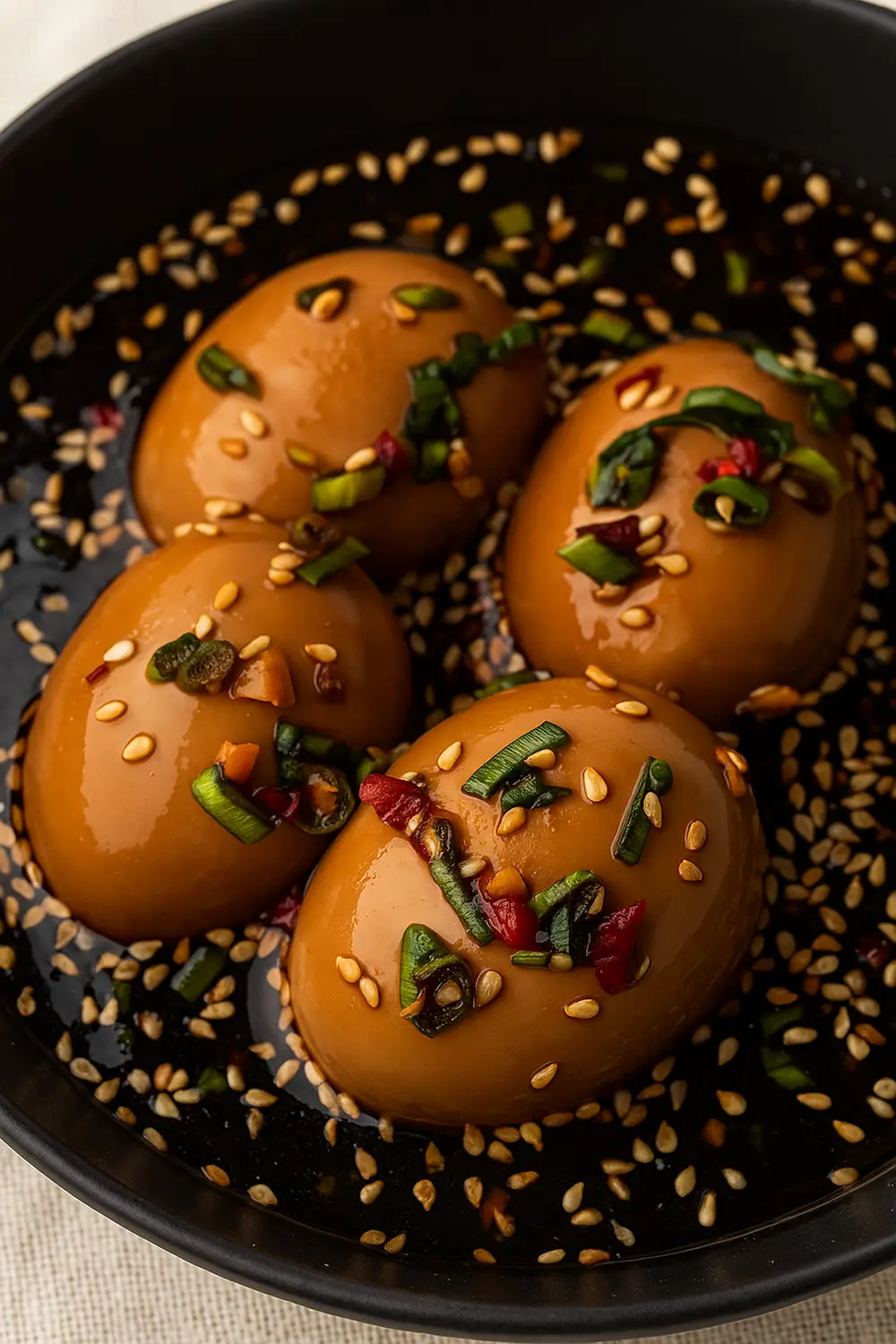
What to Serve with Korean Eggs
The versatility of the Korean eggs is part of their charm; they can adapt to almost any meal. However, they truly shine in a few classic applications:
- Mayak Rice Bowl: Slice a marinated egg over warm rice, drizzle some marinade, and sprinkle sesame seeds for a quick and satisfying meal.
- Ramen and Noodle Topping: These eggs make a decadent and flavorful topping for instant ramen, bibim guksu (spicy mixed noodles), soba, or udon, adding a rich, savory depth and a protein boost.
- Banchan: In Korean cuisine, they are often enjoyed cold alongside other traditional side dishes (like various kinds of kimchi) as part of a larger meal, perfect for balancing flavors.
- Quick Protein Snack: Simply enjoy them straight out of the refrigerator for a quick, cold, and immensely flavorful protein snack any time of day.
- Bibimbap: A Korean rice bowl topped with vegetables, meat, and a fried egg. Swap the fried egg with a mayak egg for a savory twist.
- Salads: Add sliced marinated eggs to your greens or grain bowls for extra flavor and texture.
Pro Tips for Making the Best Mayak Eggs
Want to make restaurant-quality Korean marinated eggs every time? Here are some expert tips straight from a chef’s perspective:
1. Measure the Time
Use a digital timer and adhere to the 6-minute and 30-second mark for large, room-temperature eggs.
Immediately transfer the boiled eggs to an ice bath when the timer rings to stop the cooking precisely.
2. Center the Yolk
For the first minute of boiling, gently stir the eggs in one direction with a slotted spoon or chopstick.
This minor rotation helps settle the yolk right in the center, ensuring a beautiful, balanced cross-section when you slice the egg in half.
3. Keep Sesame Oil Out of the Marinade
Do not add the toasted sesame oil to the marinade before marinating.
When stored cold for extended periods, it can develop an off-putting, “funky” flavor and potentially shorten the eggs’ shelf life.
Reserve the sesame oil and use it only as a final drizzle just before serving.
4. The Peeling Trifecta
For easier peeling and clean separation of the egg membrane, follow these three simple steps:
- Add a dash of salt and vinegar to the boiling water.
- Transfer the eggs immediately to the ice bath.
- Peel the eggs while they are submerged in the cold water.
5. Flip the Eggs for Uniformity
If your marinade doesn’t fully cover the eggs, they can develop uneven coloring.
To fix this, simply flip the eggs over halfway through the marinating period (e.g., after 6 to 8 hours).
This ensures they absorb the color and flavor evenly across the entire surface.
6. Use Raw Aromatics
The characteristic addictive flavor comes from the sharp bite of the raw, finely minced garlic and onion.
Resist the urge to cook them, as cooking mellows and sweetens the flavor. The raw pungency is essential for creating the necessary high-contrast flavor profile.
Final Remarks
These Korean mayak eggs deliver the perfect mix of comfort and crave-worthy indulgence, with their glossy soy marinade, jammy yolks, and deep umami flavor.
Enjoy them over warm rice, with noodles, tucked into kimbap, or as a savory high-protein snack straight from the fridge.
Feel free to adjust the sweetness or spice level to suit your taste, or experiment with add-ins like serrano and jalapeño for extra depth.
If you try this recipe, we’d love to hear how yours turned out, so share your version or leave a comment below.
You’ll find the full recipe and detailed steps just below.
Easy Mayak Eggs (Korean Marinated Eggs Recipe)
This easy Korean mayak eggs recipe features soft-boiled eggs marinated in a rich blend of soy sauce, garlic, scallions, sesame, and chili, perfect for rice bowls, lunch boxes, or Korean-inspired breakfasts.
Ingredients
For the Eggs
For the Marinade
For the Aromatics
How to Make Mayak Eggs (Step-By-Step Instructions)
Bring the Eggs to Room Temperature
- Remove the 8 large eggs from the refrigerator and let them sit at room temperature for at least 30 minutes.
- This prevents the shells from cracking when dropped into boiling water and helps achieve a more consistent soft yolk.
Boil the Water
- Fill a medium pot with enough water to fully submerge the eggs.
- Heat over high until the water reaches a rapid, rolling boil.
- Add the salt and vinegar.
Boil the Eggs
- Gently lower the room-temperature eggs into the vigorously boiling water using a slotted spoon.
- Immediately set a digital timer for exactly 6 minutes and 30 seconds.
Stir the Eggs
- During the first 60 seconds of boiling, gently stir the eggs in one constant direction (e.g., clockwise) with chopsticks or a slotted spoon.
- This minor rotation helps center the yolk, ensuring a visually appealing cross-section once sliced.
Transfer the Eggs to Ice Bath
- Once time’s up, immediately transfer eggs into the ice bath.
- Let them cool for at least 10 minutes before peeling.
Prepare the Marinade
- In an airtight container (a glass container is ideal), combine the soy sauce, kelp stock (or water), sweetener (syrup or dissolved sugar), and mirin.
- Whisk thoroughly until the sweetener dissolves completely in the liquid base.
- Finely chop the white onion, green onion, garlic, and chilies.
- Add all these fresh aromatics, along with the toasted sesame seeds, directly into the liquid base.
- Stir well to integrate.
Peel the Eggs
- Once the eggs are completely cool, gently tap the eggshell all over to create small cracks.
- For the smoothest peeling experience, peel the eggs while they’re still in the ice water or under a gentle stream of running water.
- Gently place the peeled, soft-boiled eggs into a glass container or bowl.
Marinate the Eggs
- Pour the marinade over the eggs, ensuring they’re fully submerged.
- Cover with a lid or plastic wrap and refrigerate for at least 6 hours, ideally overnight.
Serve & Enjoy
- When ready to serve, slice the mayak eggs in half to reveal the glorious jammy yolk.
- Serve over warm rice, spooning a generous amount of the marinade over the dish.
- Finish with a fresh sprinkle of sliced green onions and a final drizzle of toasted sesame oil.
Nutrition Facts
Servings 8
Serving Size 1 egg
- Amount Per Serving
- Calories 130kcal
- % Daily Value *
- Total Fat 5g8%
- Saturated Fat 2g10%
- Cholesterol 186mg62%
- Sodium 785mg33%
- Potassium 195mg6%
- Total Carbohydrate 6g2%
- Dietary Fiber 1g4%
- Sugars 13g
- Protein 9g18%
- Vitamin A 433 IU
- Vitamin C 23 mg
- Calcium 56 mg
- Iron 1.5 mg
* Percent Daily Values are based on a 2,000 calorie diet. Your daily value may be higher or lower depending on your calorie needs.
Note
- Always use room-temperature eggs to prevent shells from cracking when they hit the boiling water.
- Make sure the eggs are fully submerged in the marinade for even flavor and color.
- You can reuse the marinade once, but for safety, strain out the old aromatics, boil it to sterilize, and let it cool completely before adding a new batch of peeled eggs.
- Because of their soft, jammy yolks, mayak eggs are best eaten within 3 days when refrigerated, while hard-boiled ones (about 10 minutes) can last up to a week.

